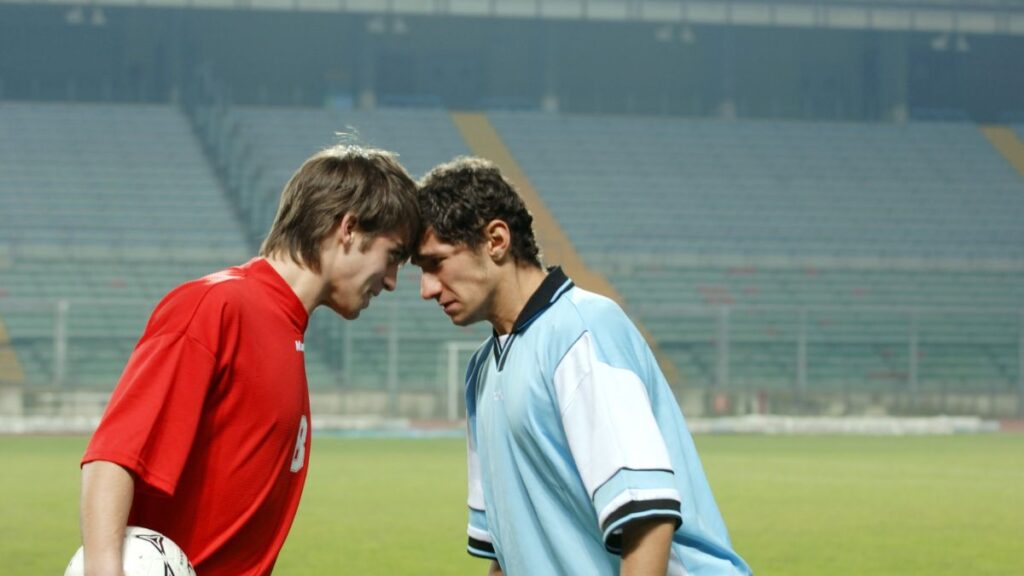Boost your betting experience and get up to $200 bonus right now!
The Copa Libertadores quarter-finals bring the heat as South American giants clash in a battle for continental glory. This stage of the tournament unveils not just tactical warfare and sheer skill, but stories of resilience, rivalry, and raw passion that define football as the world’s greatest drama. The 2025 edition has been fiercely competitive, with teams from Brazil, Uruguay, and beyond pushing their limits to etch their names in history. Flamengo, Penarol, Colo-Colo, River Plate, and other storied clubs gear up for crucial two-legged ties, where a single moment can rewrite a club’s legacy. Packed stadiums echo with the chants of passionate fans fueled by iconic sponsors like Nike, Adidas, and Gatorade. As the quarter-finals unfold, expect nothing less than electrifying plays, heroic comebacks, and the relentless pursuit of glory in matches that feel like war stories told after last-minute goals.

Flamengo vs Penarol: Clash of Titans at the Maracana
This quarter-final opener pits Brazilian powerhouse Flamengo against Uruguayan stalwarts Penarol in a thrilling first leg at the Maracana. Flamengo, a regular in the late stages of the Copa Libertadores, are no strangers to pressure, having reached the quarter-finals three out of the last four tournaments. Their home form in the 2025 Libertadores campaign has been near immaculate, boasting four wins without conceding a goal at the Maracana. This fortress status is key to their strategy, with players like Luiz Araujo and Leo Pereira providing decisive blows in previous rounds.
Contrasting Flamengo’s home dominance, Penarol’s strength resides firmly on their own turf. Diego Aguirre’s side stormed past the round of 16 with commanding home victories that secured their quarter-final berth for the first time since 2011. However, their away form tells a different story, marked by three defeats away from Montevideo in recent months, threatening their ability to withstand Flamengo’s aggressive pressing style.
- Flamengo’s key strengths: Robust defense at home, creative midfield orchestrated by Gerson and De Arrascaeta, efficient finishing from forward lines.
- Penarol’s home dominance: Four straight home wins with a combined 13-1 tally in this tournament, relying on rapid transitions and clinical strikers like Facundo Batista.
- Injury concerns: Flamengo may miss Nicolas de la Cruz and Michael through thigh injuries; Penarol made tactical lineup tweaks with Coelho and Olivera starting over Hernandez and Baez.
- Tactical battle: Flamengo to control possession and tempo; Penarol banking on counterattacks and defensive resilience away from home.
Flamengo’s almost flawless home record and Penarol’s potent home form set a high-stakes chess match. Expect the Maracana crowd, energized by the roar of iconic sponsors such as Coca-Cola and Bridgestone, to push Flamengo’s men to a narrow victory that hinges on tactical discipline and moments of individual brilliance.
| Team | Home Record (2025 Libertadores) | Away Record (2025 Libertadores) | Key Players | Injury Status |
|---|---|---|---|---|
| Flamengo | 4W, 0L, 0D, 0 Goals Conceded | Varied, 1 Goal Against in Last Match | Gerson, De Arrascaeta, Luiz Araujo | De la Cruz (Thigh), Michael (Thigh) |
| Penarol | 4W, 0L, 0D, 13 Goals For, 1 Against | 3L Recently, Fragile Away | Facundo Batista, Maximiliano Silvera | Lineup Tweaks, No Major Injuries |

Historic Rivalries and Tactical Intricacies Defining Copa Libertadores Quarter-Finals
The quarter-finals of the Copa Libertadores do more than showcase top-notch football; they revive intense rivalries and complex tactical battles. This stage often serves as the setting for unforgettable moments in football history, like those found in the top 10 legendary football comebacks or unexpected underdog stories across continental competitions. The tension between past glory and current form makes every match a battle for legacy.
Consider the dynamics between teams like Olimpia and Fluminense, who’ve met four times in the Libertadores with Olimpia holding a slight edge, or the fiery clashes where an aggregate score doesn’t tell the full story, such as penalty shootout drama or away goals that turn tides. Coaches, often celebrated for their strategic acumen, must read not only the opponent’s formations but also the psychological pulse of their players under decisive pressure. The battle lines are drawn in formations like the aggressive 4-3-3 or the defensive 3-5-2, each with implications for field control, player roles, and scoring opportunities.
- Key tactical themes: Pressing intensity, counterattacks, set-piece efficiency, ball retention versus direct play.
- Critical role players: Captain leadership, goalkeeper heroics, and clutch scorers are the difference-makers.
- Psychological warfare: Momentum shifts, crowd influence, and coach decisions under pressure.
- Technology & Stats: Beyond raw xG metrics, reading players’ body language and confidence is essential, as seen in iconic moments.
These matchups are the stuff of football legend — narratives that make fans who might not know offside rules feel the intensity and heartbreak of the sport. Without a doubt, these tactical showdowns fuel the drama that brings fans back, blending regional bragging rights with dreams of continental conquest supported by brands like Nike and Adidas.
Underdogs and Dark Horses: Stories Beyond Big Names in the Quarter-Finals
While football fever often targets stars like Messi, Mbappé, or Haaland in the global spotlight, the Copa Libertadores quarter-finals spotlight clubs and players who are regional heroes, rising stars, or misunderstood talents. This is where stories from the depths of South America emerge — where grit and grinding determination equalize or even surpass pedigree.
Penarol’s journey exemplifies this narrative: riding a wave of home dominance, they combine seasoned veterans with hungry youngsters, determined to rewrite their club’s legacy after a 14-year quarter-final drought. Meanwhile, Flamengo’s blend of star power and tactical flexibility is tested daily by such opponents. Hidden heroes like Leo Coelho and Maximiliano Olivera become the unsung warriors in these tight battles.
- Young talents to watch: Facundo Batista’s shooting sharpness, Maximiliano Silvera’s work rate.
- Veteran leadership impact: Coaches like Diego Aguirre use experience to build mental resilience in squads.
- Teamwork over individualism: Collective effort often trumps individual brilliance in two-legged pressure cookers.
- Fan culture: Passionate supporters create atmospheres turning stadiums into battlegrounds, with brands like Coca-Cola and Gatorade energizing the scenes.
This quarter-final phase isn’t just about who has the most firepower but who can harness history and heart to seize the moment. Considering stories like those chronicled in offbeat football tales reveal how underdogs sometimes craft the loudest roars in South American football nights.
Decoding Team Strategies: Flamengo and Penarol Formation and Tactical Insights
Understanding the strategies that Flamengo and Penarol bring to the pitch means diving into their on-field setups, player roles, and style of play. Flamengo tends to favor a fluid 4-3-3 formation, blending quick wing play with midfield creativity. Their key midfield trio acts as the engine, linking defense and attack seamlessly, while forwards like Luiz Araujo exploit spaces behind defensive lines. This setup maximizes their home advantage by sustaining possession and wearing down opponents.
Penarol counters with a mixed 4-2-3-1 that morphs into a compact 4-5-1 when defending. This flexibility allows them to absorb pressure and launch sharp counters with players like Maximiliano Silvera acting as the spearhead. Their strategy hinges on patience away from home, aiming to frustrate the opponent before unleashing quick bursts of attack.
- Flamengo’s approach: Ball control, high pressing in the opponent’s half, exploiting flanks.
- Penarol’s approach: Defensive solidity, rapid counters, exploiting set-pieces.
- Key battles: Midfield control by Gerson vs. Ramirez; wing play versus full-back discipline.
- Adaptability: Both teams prepared to tweak tactics based on first leg’s scoreline and player availability.
| Team | Preferred Formation | Attacking Focus | Defensive Strategy | Star Player Role |
|---|---|---|---|---|
| Flamengo | 4-3-3 | Wings and midfield creativity | High pressing, tight marking | Gerson (Midfield maestro) |
| Penarol | 4-2-3-1 / 4-5-1 | Counterattacks, set-pieces | Defensive compactness | Maximiliano Silvera (Forward) |
Dissecting formations with clarity makes it easier to appreciate the tactical chess unfolding on the pitch. Fans new to football can refer to beginner-friendly guides explaining the difference between, say, 4-3-3 and 3-5-2, enhancing their viewing experience on platforms such as EA Sports-sponsored broadcasts. Meanwhile, veterans recognize the subtle team shifts as a battle of wits as much as skills.
How This Quarter-Final Shapes South America’s Football Power Landscape
The Libertadores quarter-finals don’t just decide who advances; they signal the shifting balance of football power on the continent. Brazil’s continued dominance with five teams this far emphasizes their footballing infrastructure and investment — Nike and Adidas gear flows through these clubs, symbolizing their global influence. Yet, historic clubs from Uruguay, Chile, and Argentina fight fiercely to disrupt this status quo, crafting moments that captivate even casual viewers.
What happens in this quarter-final stage often echoes beyond the tournament, influencing transfer markets, club finances, and national pride. For instance, a successful campaign can boost a club’s exposure internationally, attracting sponsorships from giants like Qatar Airways and Gillette. More than that, it fuels aspirational dreams for young players from underrepresented regions, reminding everyone that football is a people’s game first.
- Brazilian powerhouses: Flamengo continues to represent the apex of club football backed by star players and deep budgets.
- Emerging challengers: Penarol’s resurgence signals growing competitiveness from Uruguay despite smaller budgets.
- Financial and cultural impact: Success brings sponsorship and fanbase growth, exemplified by ties with brands like Santander and Bridgestone.
- Global football relations: South American club success resonates in Europe and beyond with player transfers and worldwide broadcasting.
To understand these dynamics better, exploring stories like top European football clubs’ dominance or following the unpredictable narratives from competitions such as the Europa League underdogs adds perspective. The Copa Libertadores quarter-finals are a vital chapter in shaping football’s global future.
Join today and grab up to $200 bonus for your next bets!
Content assisted by AI. This article was created in whole or in part with the help of artificial intelligence.